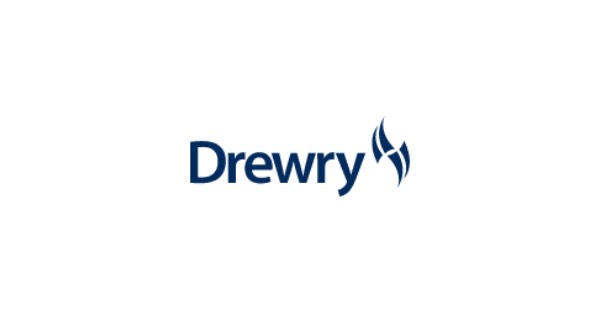On 26 March 2024, a 9,971 teu container vessel ‘DALI’ collided with the Francis Scott Key Bridge near the Port of Baltimore. The vessel was chartered-in by A.P. Moller-Maersk (APMM), and it stated that no crew or personnel from APMM was aboard the ship. Apart from APMM, other major carriers calling at the port of Baltimore include MSC, CMA CGM, Hapag-Lloyd (HLAG), Evergreen, COSCO Shipping and ZIM. Barring ZIM and Evergreen, other carriers have invoked force majeure, passing on additional costs for rerouting to other ports onto shippers. As a result, stock prices of publicly listed carriers strengthened. APMM’s stock improved 8.3% between 26 March and 4 April, while the broader Drewry Container Equity Index rose 5.1% in the same period.
Based on a sample of 11 companies, the container shipping industry reported an aggregate EBIT loss margin of 6.2% in 4Q23. Additionally, carriers like ZIM, Wan Hai and Yang Ming reported annual EBIT losses in 2023 to be joined by giants like APMM and HLAG in 2024. Thus, the Drewry Container Equity Index fell 6.7% YTD (ending 4 April 2024), compared to the WCI’s 76.3% gain due to the impact of the Red Sea disruption in 1Q24. However, WCI has declined for 9 weeks straight and is 28.5% lower than its peak (2024) in January.
While large-scale acquisitions have slowed, container liners continue investing in logistics service providers. In YTD, Evergreen acquired an inland logistics provider (Italia Marittima, 100% stake). HLAG acquired logistics consulting services provider – ATL Handling and Haulage and MSC acquired a 42% stake in freight forwarding and logistics specialist Clasquin. Interestingly, APMM recently spun off their towage business (Svitzer) to focus on integrated container shipping, port operations and logistics – a strategy they hope to bolster by a possible acquisition of logistics giant DB Schenker.
Container shipping companies continue to invest in fleet expansion and upgrades. This is driven by the need to maintain market share and comply with environmental regulations. ONE recently unveiled its plans to expand its fleet size to 3.0 mteu by 2030 from the current 2.3 mteu, which includes an orderbook of 0.5 mteu. This move will put pressure on HLAG to order more vessels to maintain its spot just above ONE, as the former’s fleet size is 2.3 mteu, which incorporates an orderbook of 0.2 mteu. On the fleet upgrade front, CMA CGM has earmarked 100 vessels to be retrofitted at the Damen Shiprepair Dunkerque and Damen Shiprepair Amsterdam yards to increase fuel consumption efficiencies between 5% and 10%.
While freight rates have started to decelerate (after jumping in 1Q24), the charter market strengthened further in February as carriers continue to grapple with deploying additional vessels around the Cape of Good Hope as reflected in the low idle fleet of 1.4% in February (vs 3.0% in January). Thus 1-year TC rates in February 2024, for 3,500-teu and 5,500-teu vessels jumped 10.7% and 46.7% MoM, respectively. This hike in chartering costs will erode the increase in revenues from the elevated spot rates in 1Q24 for the chartered portion of carriers’ fleets. The strong charter market is also boosting second-hand prices. In February, prices for 10-year-old
1,700 teu and 4,000 teu vessels increased 7.1% MoM and 4.2% MoM, respectively.
Container shipping companies are still facing challenges due to overcapacity, even though there has been temporary relief from the crisis in the Red Sea. The Drewry Container Equity Index’s low P/B multiple of 0.6x indicates a 45.5% discount from its pre-pandemic average due to pessimistic freight rate expectations and EBIT loss projections for 2024.
Source: Drewry









































